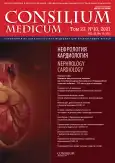Interaction of drugs and coffee
- Authors: Pereverzev A.P.1, Ostroumova O.D.1,2
-
Affiliations:
- Russian Medical Academy of Continuous Professional Education
- Sechenov First Moscow State Medical University (Sechenov University)
- Issue: Vol 23, No 10 (2021)
- Pages: 777-783
- Section: Articles
- URL: https://journals.rcsi.science/2075-1753/article/view/96688
- DOI: https://doi.org/10.26442/20751753.2021.10.201089
- ID: 96688
Cite item
Full Text
Abstract
Coffee is the most widely consumed beverage in the world. About 80% of the world's population consumes coffee and other coffee products on a daily basis. For residents of Finland, Norway, Iceland and North America this figure reaches 90%. Coffee consists of a large number of chemical constituents, including caffeine, chlorogenic acids, diterpenes and trigonellins, which are the most biologically active and most important constituents of the beverage. Taking coffee together with drugs can affect their pharmacokinetic profile, changing the absorption process, the degree of dissolution, pH of the gastrointestinal tract (GIT), affecting the state of permeability of the membranes of the GIT cells, on the transit time of food through the GIT, as well as for due to the formation of insoluble complexes and inhibition of glucose-6-phosphatase. Coffee can reduce intestinal absorption of inorganic compounds (iron, calcium preparations), as well as some organic compounds (glucose, vitamin D, etc.) if taken simultaneously with coffee. Drinking large amounts of coffee due to active diuresis can also increase the elimination of electrolytes (including sodium, chlorides) and vitamins from the body. Another potential type of interaction between drugs and coffee is the pharmacodynamic type (at the level of receptors and pharmacological effects). For example, the instructions for the medical use of drugs – adrenergic receptor antagonists (for example, salbutamol, salmeterol, epinephrine) and methylxanthines (aminophylline, theophylline) contain information that the joint intake of coffee contributes to additional stimulation of the central nervous system and increases their toxicity. Healthcare practicionars should know and be sure to take into account the potential interactions between drugs and coffee and ensure an appropriate time interval between taking drugs and coffee, which will avoid the development of potential complications of pharmacotherapy.
Keywords
Full Text
##article.viewOnOriginalSite##About the authors
Anton P. Pereverzev
Russian Medical Academy of Continuous Professional Education
Author for correspondence.
Email: acchirurg@mail.ru
ORCID iD: 0000-0001-7168-3636
Cand. Sci. (Med.), Russian Medical Academy of Continuous Professional Education
Russian Federation, MoscowOlga D. Ostroumova
Russian Medical Academy of Continuous Professional Education; Sechenov First Moscow State Medical University (Sechenov University)
Email: ostroumova.olga@mail.ru
ORCID iD: 0000-0002-0795-8225
D. Sci. (Med.), Prof., Russian Medical Academy of Continuous Professional Education, Sechenov First Moscow State Medical University (Sechenov University)
Russian Federation, MoscowReferences
Supplementary files






